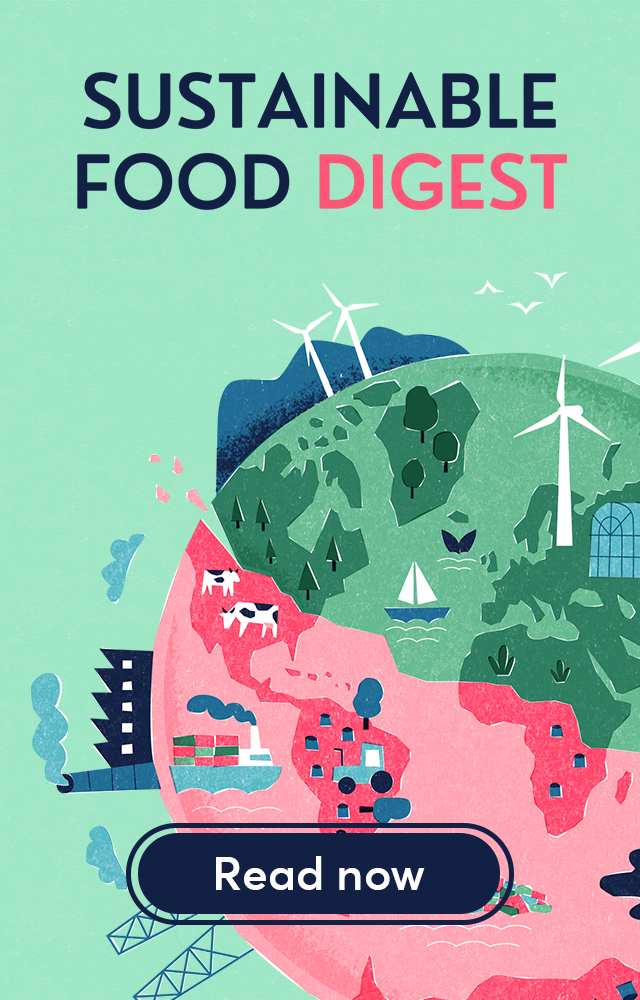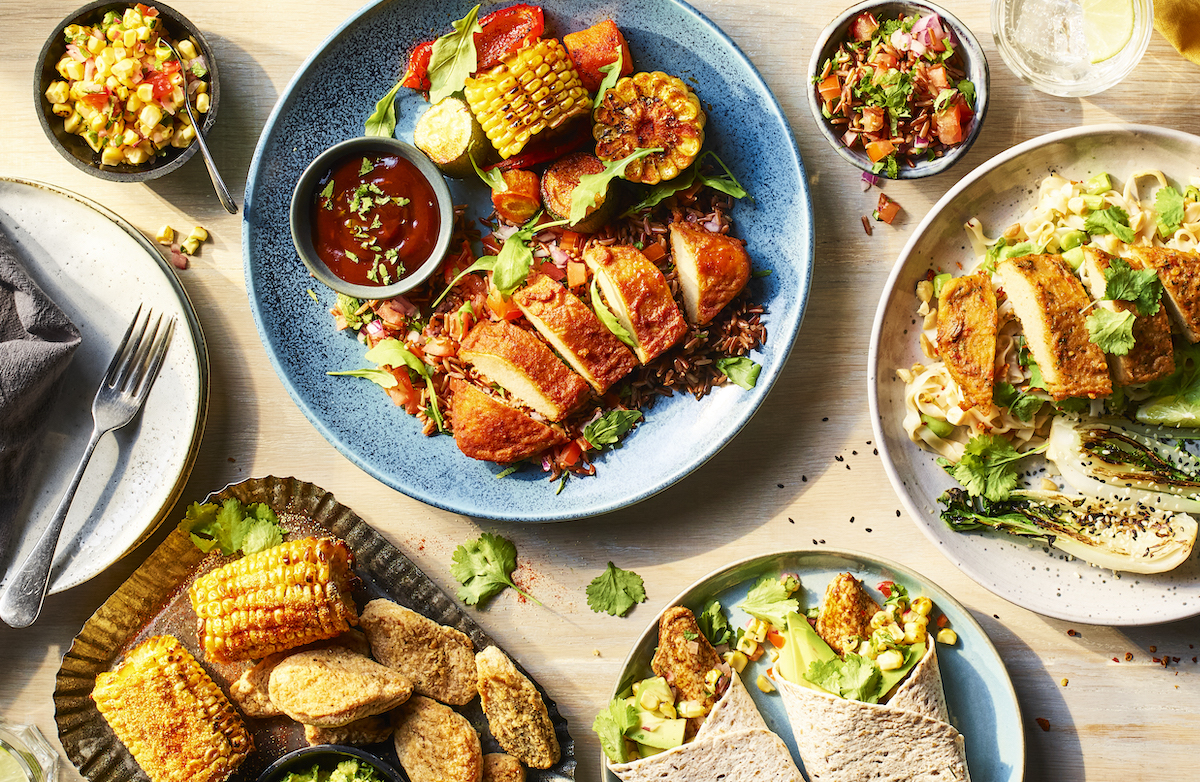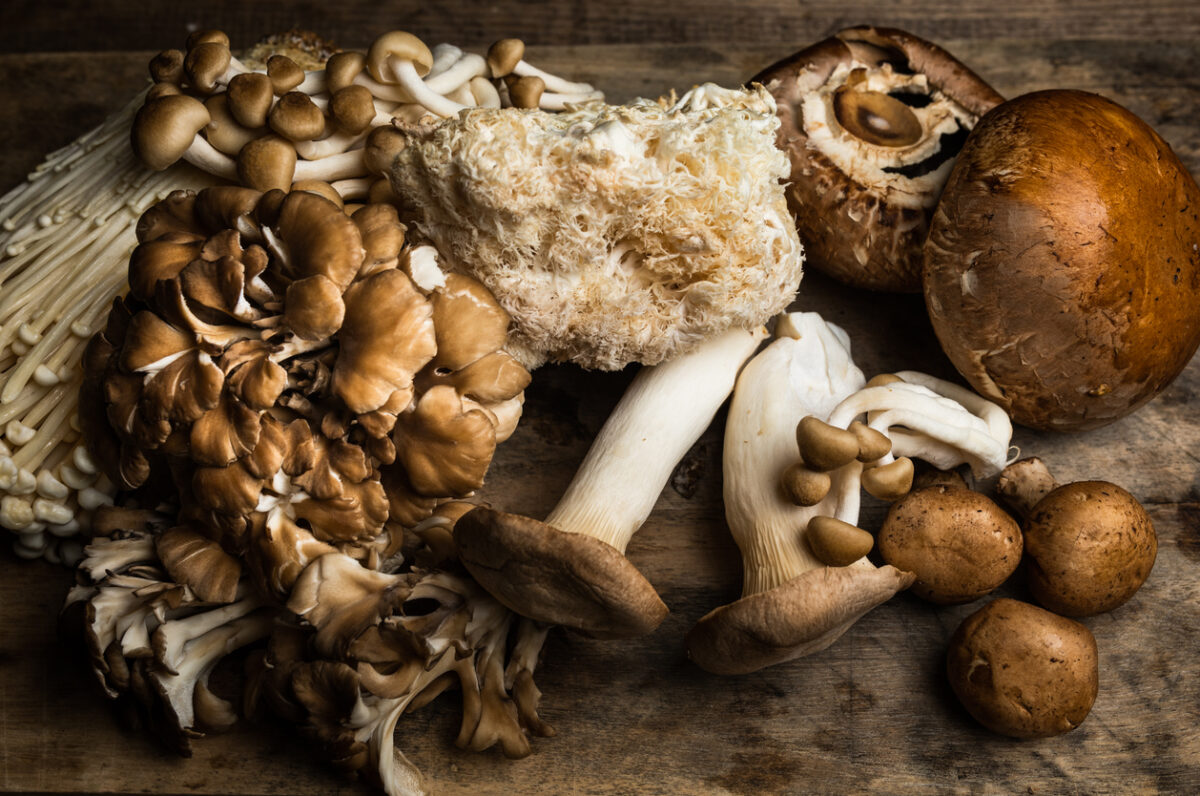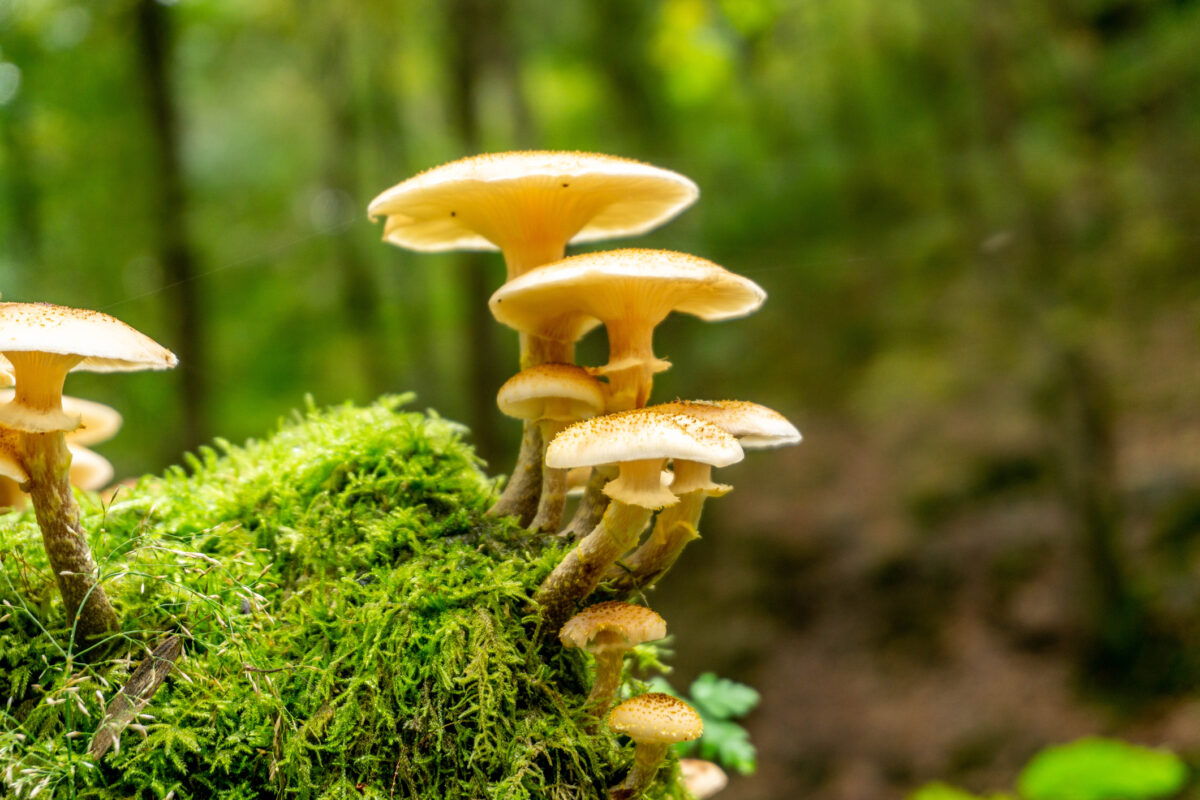The magic of mushrooms: the versatility and sustainability of fungi
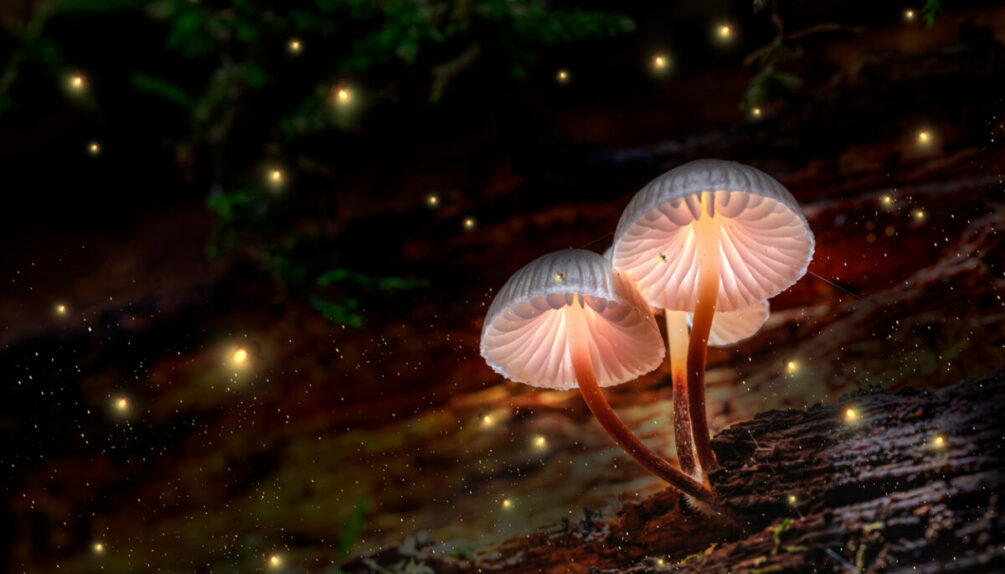
Mushrooms really are rather magical and with millions of different types of fungi, we’re only just beginning to understand the potential of these amazing organisms. Some break down polypropylene and plastics, or detox oil contamination, while others are being used to make wearable bio-leathers that can self-repair if the fabric gets ripped or torn and create vegan fabrics for handbags.
Many fungi produce vast networks of mycelium or fungal threads that make up the root structure, and mushrooms are simply the fruiting body of a fungus. They’re incredibly diverse, yet we only eat a few types. Even the tiny button mushrooms and portobellos sold in supermarkets actually come from the same strain; they’re just harvested at different life stages. Gradually, the potential of fungi is being realised, and the global mushroom market is estimated to be worth $86bn by 2028. This growth is partly being driven by an increased awareness of the health and wellbeing benefits of some mushrooms as functional foods. They’re not only nutritious, they’re good for the planet too. As one 2022 research paper titled Mushrooms as future generation healthy foods states, the potential of edible mushrooms is ‘an unexploited treasure trove’, so let’s investigate the many reasons mushrooms are such a trendy ingredient right now.
Mushrooms on the menu
For starters, what makes mushrooms so delicious? While not all fungi are edible, mushrooms such as lion’s mane are well-known for their deep, earthy, savoury umami flavour which is thought to come from the many amino acids it contains, in particular glutamate. Meaning ‘delicious’ in Japanese, umami is the fifth flavour sensation after sweet, sour, salty and bitter. Science writer Eugenia Bone is a US-based wild mushroom hunter and author of many books, including her latest edited collection, Fantastic Fungi: Community Cookbook. For her, the beauty of cooking with mushrooms lies in their adaptability, versatility, and flexibility as a cooking ingredient: “They are unlike a vegetable because they can be cooked a lot and their integrity will be unharmed. If you cook a potato and a mushroom in boiling water, within ten minutes, that potato will begin to disintegrate but that mushroom is going to be fine,” says Bone, who explains that mushroom cell walls are made of a tough substance known as chitin – “a very interesting polysaccharide that holds up extremely well to wet heat”.
Since 1985, the word mycoprotein has been used to describe food-grade proteins extracted from fungi, such as Quorn which is made using a soil fungus called Fusarium venenatum. Once fermented, the resulting Quorn mycoprotein has a carbon footprint 95% lower than that for the production of traditional beef mince. Quorn recently announced that a new partnership with US-based mycelium deli meat producer, Prime Roots, will expand the product range to include more charcuterie products made using koji mycelium, which is a mixture of yeasts, mushrooms, and other fungi. Koji is known for its strong umami flavour and has long been used in Japanese cookery, within miso, soy sauce and sake.
Some mycoprotein companies are beginning to use fungi to break down waste materials. For example, Oman produces more than 400,000 tonnes of dates every year, yet almost half goes to waste or animal feed, and a US-based firm MycoTechnology is beginning to use the sugars in leftover dates as a source of carbon to fuel the production of mushroom-based protein. Meanwhile, Swedish foodtech start-up Mycorena is collaborating with packaging giant Tetra Pak to use fungi fermentation techniques to create a meat-free mince alternative. Together with Quorn, Mycorena has also just launched the Fungi Protein Association, a new trade group that aims to accelerate the production of fungi-based protein alongside plant-based and cultivated meat alternatives.
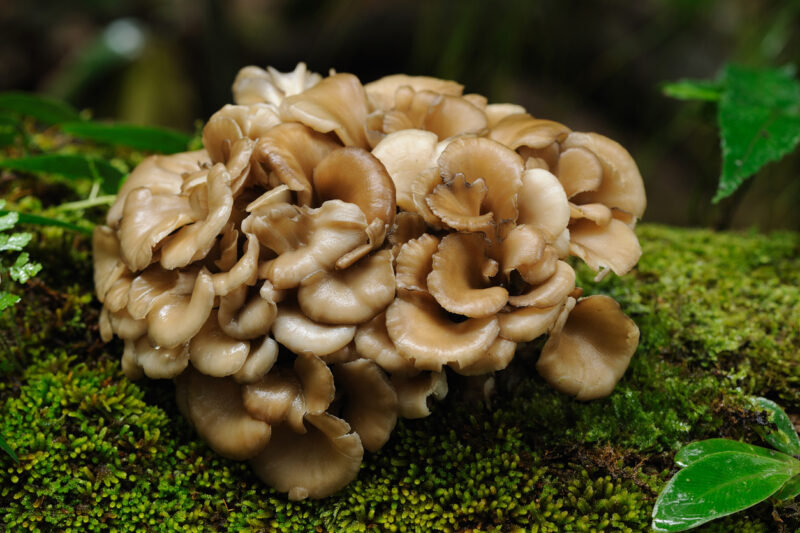
Maitake mushroom also known as hen of the woods
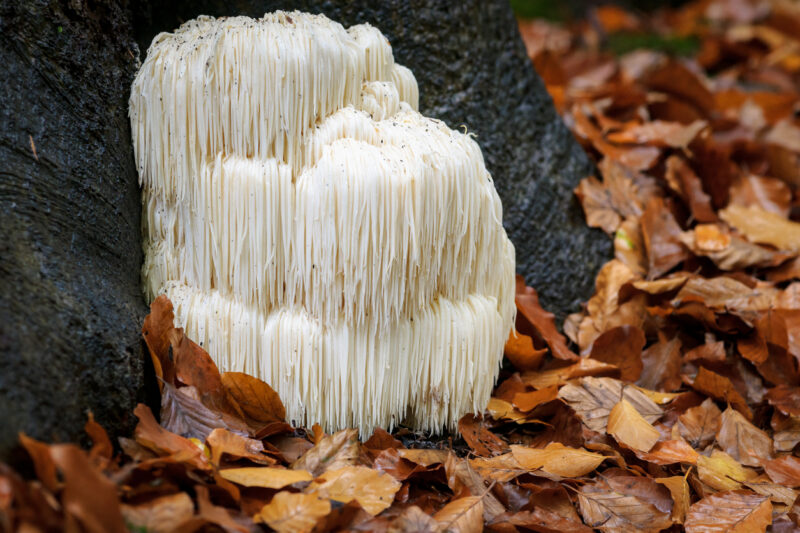
Lion’s mane mushroom
Left: Maitake mushroom also known as hen of the woods
Right: Lion’s mane mushroom
As the global mycoprotein sector evolves, it’s perhaps unsurprising to note that mushrooms have a dense, meaty texture, which Bone suggests could be attributed to this chitin cell wall – and perhaps this is what lends fungi to provide such a suitable low-impact and meat-free alternative. That combined with the presence of so many amino acids makes mushrooms “very amenable” to the same flavour profiles and even the same cooking techniques as meat. “From my culinary perspective, it’s surprising how many applications mushrooms have because they don’t disintegrate so quickly,” she says.
Mushrooms can also absorb other flavours, depending on how you cook them. “If you cook mushrooms in a pan of mixed vegetables, for example, the mushrooms will give up their water and part of their flavour in that process, then whatever flavours are present, say an acidic tomato, will dominate,” says Bone, who describes herself as a ‘mycophagist’. “As mushroom cooks, we tend to cook mushrooms separately so that their flavour doesn’t disperse into the dish in general. Then we combine it to maintain that mushroom flavour in a more distinct way,” says Bone. “You also don’t have to cook mushrooms in fat – you can dry cook them or add the fat after the mushrooms are cooked. If you keep adding fat to cook up mushrooms, they’ll end up being slimy and greasy,” she advises.
“We can really turn [fungi] into a proper sustainable food system with all the benefits of conservation, biodiversity, everything.”
Professor Paul Thomas, University of Stirling
Because mushrooms are great absorbers, their flavours reflect where they grow. This terroir is also apparent in artisan foods such as cheeses and wine. “I’ve noticed flavour differences between cultivated and wild hen-of-the-woods – the flavour is amped up on a wild mushroom,” explains Bone. “What we think might be happening is that, in a cultivated scenario, a mushroom does not have to produce a range of chemicals to survive it’s environment. That difference could result in more or less taste. The idea is that in the wild, the mushroom has to do more jobs and therefore produce more chemicals and that may explain why the two taste different.”
One word of caution though. Because fungi are nature’s decomposers and have evolved to break things down in the environment, terroir is particularly important to consider when collecting wild mushrooms: “We don’t want to collect mushrooms on mining tailings, for example – they will take up heavy metals such as lead from the soil – and it’s thought that the fungi push [those toxics] into the mushroom so it’s out of the fungal body. Those heavy metals may show up in the mushrooms.” That’s not a risk in a controlled environment, so cultivating mushrooms at scale, rather than harvesting in the wild, does have many advantages, especially as demand for these foods as a source of nutrition increases.
The health properties of mushrooms
“Fungi are a great healthy food. You should definitely be incorporating mushrooms into your diet but they’re not going to solve a problem that other foods can’t solve. They’re not a silver bullet. It’s a marketing game,” says Bone. As the supplement industry booms, she is quick to clarify that there isn’t yet enough science to confirm their status as a superfood. “There’s a rush to suggest that fungi are more nutritious than they are,” she explains. “There has to be a bit of moderation in one’s thinking about it. So when it comes to proteins, for example, fungi have high-quality protein – with all nine amino acids present – but they’re 90% water so they don’t have very much protein – it’s not equivalent to a piece of chicken.” The use of the term ‘protein-rich’ is therefore misinformed, she says.
So what can you expect from mushrooms from a nutritional point of view? Bone explains there’s a lot of good fibre in fungi: “They help you poop and also support the bacterial colonies living in your gut,” she says. Mushrooms are also one of the few non-animal sources of vitamin D2, and its concentration can be enhanced when cultivated mushrooms are exposed to UV radiation through sunlight or a UV lamp. One 2008 study also showed that because they are mainly water, participants replacing meat in their diet with mushrooms actually felt more satiated and full for longer, taking in fewer calories: “Researchers hypothesised that they felt full because of the high-grade protein that’s present in scant amounts,” explains Bone.
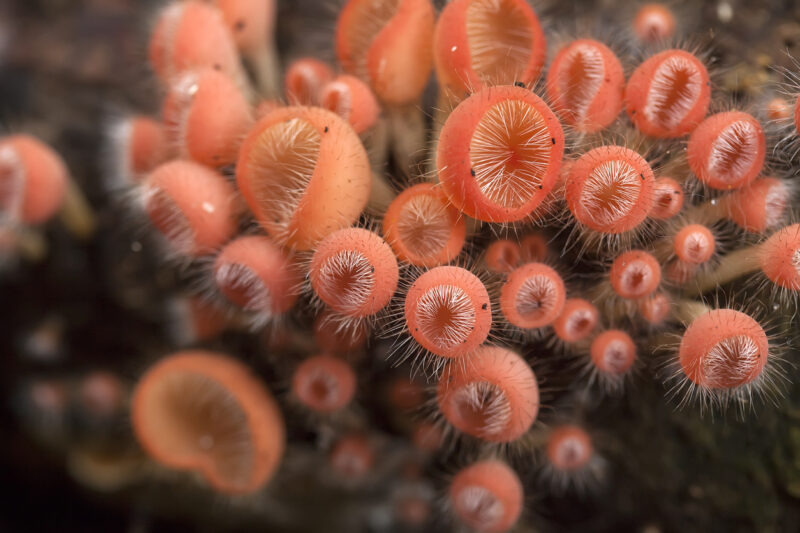
There are many varieties of mushrooms, growing all over the world, but we only know and eat few types
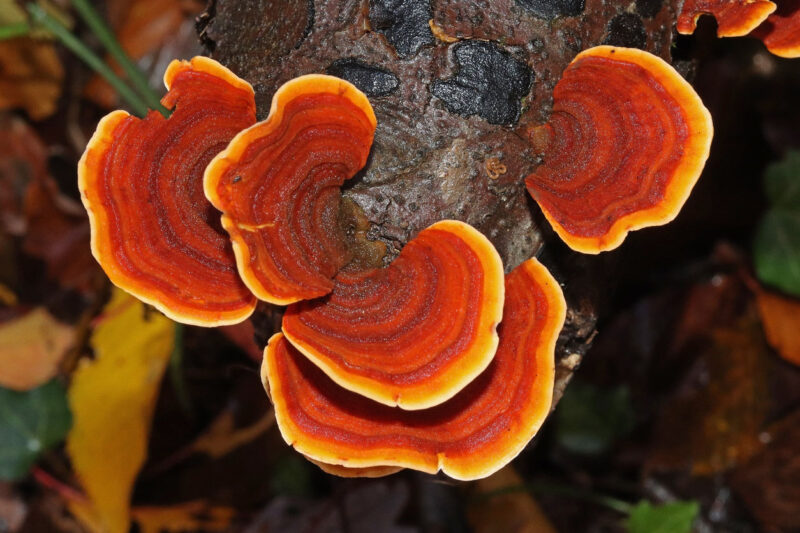
Turkey-tail mushrooms, also known as trametes versicolor
Left: There are many varieties of mushrooms, growing all over the world, but we only know and eat few types
Right: Turkey-tail mushrooms, also known as trametes versicolor
Many start-ups are promoting the nutraceutical properties of mushrooms, as explored in Food Matters Live’s podcast Are we on the cusp of a mushroom renaissance? This episode delves in a number of innovations in the fungi field, including Fungtn, a company that makes alcohol-free craft beers from mushrooms such as shiitake, reishi, and lion’s mane that have flavour profiles similar to the earthy tones of traditional hops. Another couple of start-ups mentioned are Dirtea, which sells powders containing extracts of chaga, turkey tail and other mushrooms that can be added to hot water, coffee or a shake, and Rheal, which sells a coco dream hot chocolate drink boasting extracts of reishi mushroom, and a shroom coffee made with lion’s mane, a mushroom thought to support brain health and help maintain focus.
Podcast guest Andy Overall, a field mycologist, explains that turkey tail, a common fungus that grows on wood in tiers “has got lots of medicinal properties”. He outlines that claims based around specific healing properties of various fungi include anti-cancer, anti-inflammatory properties, and even the ability to slow the degeneration of cognitive function.
But of course, context is always key. One Japanese study suggested there was a lower incidence of dementia if people had mushrooms in their diet, but as Bone highlights, that study was really a survey. “This study shows correlation, not causation,” says Bone. And the same applies to a Korean study that links high dietary mushroom intake to reduced breast cancer risk in premenopausal women. “So I wouldn’t rule out the potential of fungi to augment our health in any number of ways, and there’s nothing wrong with the Japanese study but it doesn’t prove mushrooms reduce the risk of dementia. Science illiteracy is one of the things fuelling some of the fantasies about what mushrooms can do.”
Carbon-capturing mushrooms
Mycorrizal fungi that grow around plant roots are responsible for holding a third of global fossil fuel emissions below ground – more than China emits each year, so researchers at the University of Sheffield are calling for fungi in healthy soils to be considered ‘the most effective carbon capture storage unit in the world’.
As Food Matters Live recently reported, cultivating edible mushrooms alongside trees – a field known as mycoforestry – could not only provide a valuable and nutritious food source, but also capture vast amounts of carbon and reduce climate change impacts. The study was led by Paul Thomas, honorary professor at the University of Stirling, who says that historically, fungi have been ignored but actually bring opportunities to mitigate climate change and improve food security: “In that paper, we focus on the carbon sequestration benefits because they’re huge, but aside from that, compared to normal agriculture, you’re providing all these ecosystem services.” Thomas explains that woodlands with diverse communities of fungi can also help flood mitigation and reduce the risk of desertification.
“We can really turn [fungi] into a proper sustainable food system with all the benefits of conservation, biodiversity, everything.”
The kingdom of fungi is vast with more than three million species and more that haven’t even been identified yet. But as Thomas points out, there are species going extinct every single day, and even within the common species, new novel compounds that might have powerful medicinal properties are being found just by growing them on different substrates. The possibilities are endless, but as Thomas says, “there’s so much to be done”.
“From my culinary perspective, it’s surprising how many applications mushrooms have because they don’t disintegrate so quickly.”
Eugenia Bone, wild mushroom hunter and author
Once scaled up, mycoforestry could yield food without the need for big agricultural chemical inputs or intensive cultivation – most fungi will grow quickly within the three or so years, then produce mushrooms on an annual basis. Thomas outlines that if this system had been used in forestry that has taken place during the last 10 years, we could have produced enough food to feed 18.9 million people annually. “When you inoculate trees and plant these systems, there’s no need to apply fertiliser, you’re not cultivating the ground because the leaves are falling and the fungus is living off that and decomposing twigs….these completely self-sustaining natural systems have existed for millions of years. We’re planting a lot of trees already, so if we can just slot into that system and inoculate the trees, that’s the ultimate goal really,” says Thomas who explains that if huge amounts of fungi are produced in the future, not only could the fruiting bodies – mushrooms – be harvested as a food source, but also protein, vitamin D and other beneficial compounds could be extracted and processed into powders that can be used as ingredients.
“The more trees we lose, the more vulnerable the whole system is becoming and the less resilience there is, just in terms of climate and crops. We need some way of solving this land use conflict where we can have food and forestry and all those benefits from the same plot of land,” he says, adding that harnessing this natural potential is “a complete no brainer.”
Bone agrees that fungi are an untapped resource, but adds that their benefits go beyond the nutritional and environmental. “For me, the most wonderful thing about being a wild mushroom hunter is that eating wild mushrooms is intricately tied to the experience of being in the woods and the restorative experience of hunting mushrooms, that deep observation of nature – you don’t have to be in the Grand Rockies to experience that,” she reflects. “Fungal organisms can be in the humblest of locations. It’s that interior experience that is ultimately the most nourishing thing for me.”


